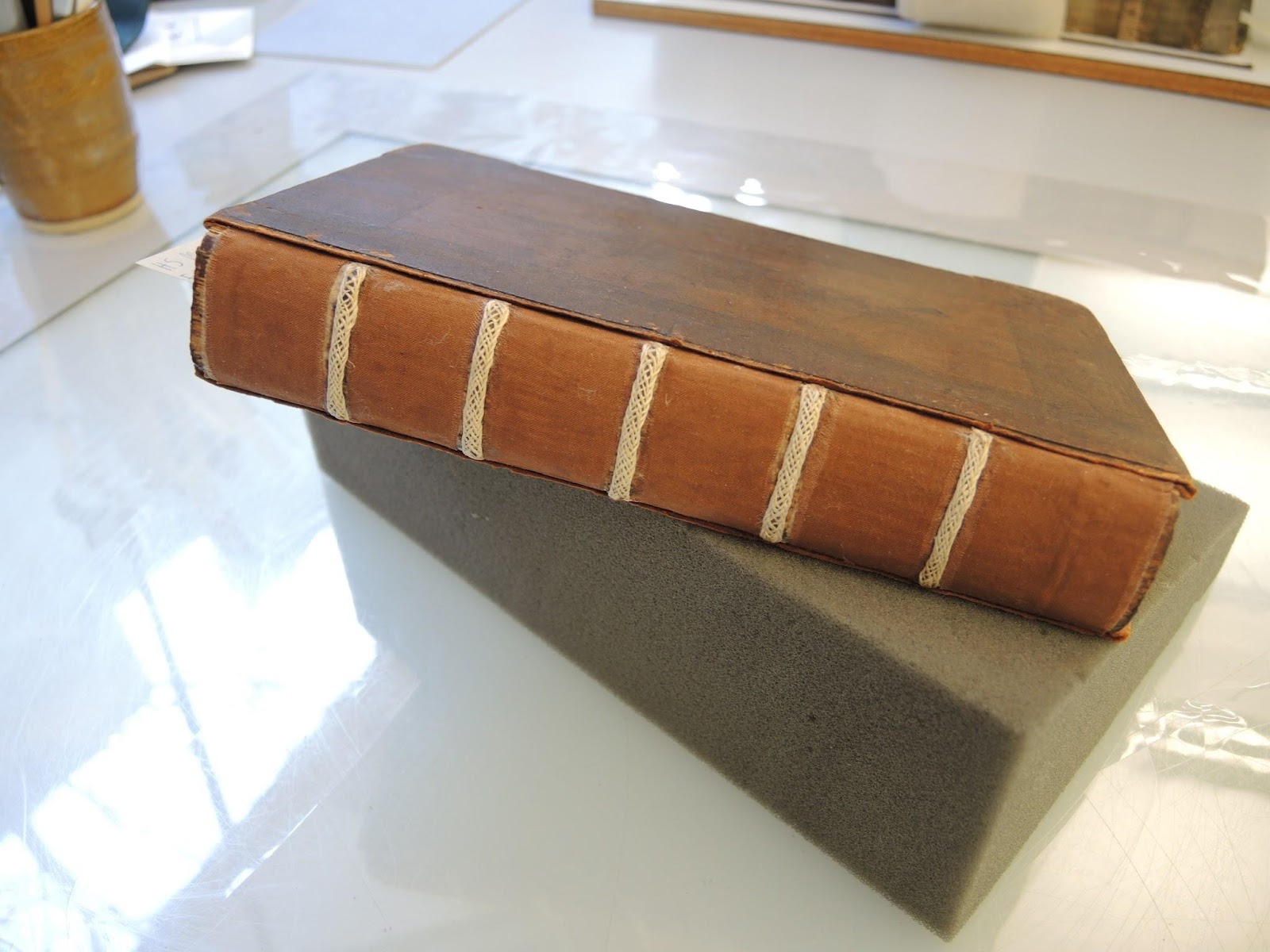Alongside the digitisation of the marginalia, the collection is also being conserved so as to preserve the physical objects for posterity. A knock on effect of digitisation projects is the increased interest in the objects themselves, and there are a number of treatment approaches that can strengthen the often fragile volumes. In conservation, we are not trying to make the object look ‘new’, but rather to use techniques that preserve as much of the original material as possible while still restoring a functionality to the volume. Often the books will look very much the same on the outside, but they won’t fall apart when you open them.
Poor handling of books in a library can cause a number of problems. Often spine pieces become detached when the book is continually pulled from the head edge, or when the covering material breaks and degrades. Missing spines can mean the loss of important information and makes the rest of the cover more vulnerable. Conservation can repair lost spine pieces and reattach fragments using toned materials, for example in this cloth bound volume:
Emerson, R. W., Essays (1841)
Before:

After:

The structure of a book is a brilliant and enduring technique for collating and protecting the otherwise fragile pages of a text. Many of the ways in which books get damaged have to do with the mechanics of use, for example, broken joints where the book is constantly opened and splits in the spine where the book has been forced at a particular point. For example, this item has both boards detached and a split down the spine:
Mandeville, B., The Fable of the Bees. Part II (1725)
Before treatment, with detached boards:

During treatment:

After treatment, with the original spine back in place and the boards reattached:

In this example I adhered kozo-fibre paper and textile spine linings underneath the original spine. These held together the split in the textblock, and formed part of the board attachment on the book.
The conservation treatments are carried out at the Oxford Conservation Consortium, where our busy team work for the library and archive collections of 17 Oxford colleges. We are also the custodians of the Chantry Library, a collection of conservation literature open to the public. You can read more about the Chantry here.
— Nikki Tomkins, Conservator, Oxford Conservation Consortium